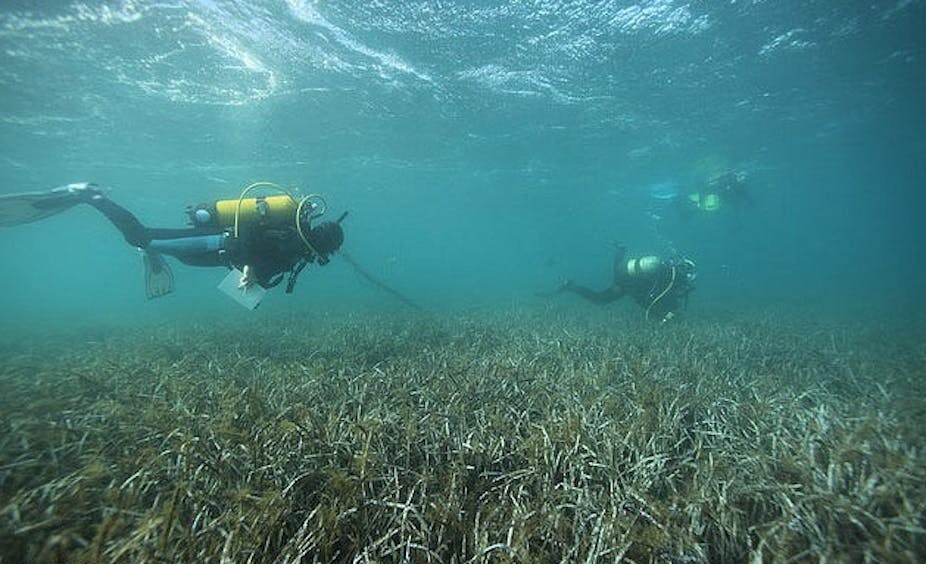An ancient seagrass that spans up to 15 kilometres and weighs more than 6,000 metric tonnes may be more than 100,000 years old - making it the oldest living organism, Australian researchers have found.
But Posidonia oceanica, which occurs only in the Mediterranean and Australian waters, is now under threat from global warming, the team reported.
The seagrass reproduces by asexually generating clones of itself, so meadows spanning vast areas of the seabed are genetically identical and counted as one organism.
Researchers from the University of Western Australia’s Ocean’s Institute analysed the DNA of the seagrass at 40 sites across 3,500 kilometres of the Mediterranean Sea, from Spain to Cyprus.
By calculating the plant’s annual growth rate, the team determined that the meadows are between 80,000 and 200,000 years old.
Their findings are reported in the journal PLoS One.
Previously, the oldest known living organism was a Tasmanian seagrass, Lomatia tasmanica, believed to be 43,600 years old.
“Clonal organisms have an extraordinary capacity to transmit only ‘highly competent’ genomes, through generations, with potentially no end,” the Director of the Ocean’s Institute, Winthrop Professor Carlos Duarte, said.
Seagrasses are integral to coastal ecosystems. But despite flourishing for so long, tests show they have waned across the world over the past 20 years.
Posidonia oceanica meadows are now declining at an estimated rate of 5% annually.
“The concern is that while Posidonia oceanica meadows have thrived for millennia, their current decline suggests they may no longer be able to adapt to the unprecedented rate of global climate change,” Professor Duarte said.
Ocean acidification “and recent anthropogenic pressure on coastal areas resulting in changes in water quality, eutrophication, and nutrient load” were threatening the future of seagrasses, the team wrote in their paper.
“Indeed, the ancient meadows … are declining at a rate several hundred-fold faster than the rate over which they spread when forming, a situation that this slow growing, long-lived species is poorly capable of recovering from.”
Professor Eric Wolanski, from the Australian Center for Tropical Freshwater Research at James Cook University, has spent several years studying seagrass off the coast of the Philippines. He said the meadows there had been reduced to just 5% of their original size.
“That’s entirely due to human impact,” he said. “All over the world, seagrass has been very severely hit.”
Replanting seagrass was rarely successful, he said, because it did not easily take hold.
Seagrass meadows in the Great Barrier Reef that were wiped out by Cyclone Yasi last year were reappearing much slower than hoped, Professor Wolanski said. “The water quality is making it much harder for them.”


